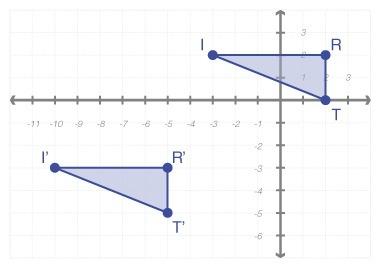
Mathematics, 02.09.2020 18:01 nakeytrag
Which statement is correct? StartFraction 3.56 times 10 Superscript 2 Baseline Over 1.09 times 10 Superscript 4 Baseline EndFraction less-than-or-equal-to (4.08 times 10 Superscript 2 Baseline) (1.95 times 10 Superscript negative 6 baseline) StartFraction 3.56 times 10 Superscript 2 Baseline Over 1.09 times 10 Superscript 4 Baseline EndFraction less-than (4.08 times 10 Superscript 2 Baseline) (1.95 times 10 Superscript negative 6 baseline) StartFraction 3.56 times 10 Superscript 2 Baseline Over 1.09 times 10 Superscript 4 Baseline EndFraction greater-than (4.08 times 10 Superscript 2 Baseline) (1.95 times 10 Superscript negative 6 baseline) StartFraction 3.56 times 10 Superscript 2 Baseline Over 1.09 times 10 Superscript 4 Baseline EndFraction = (4.08 times 10 Superscript 2 Baseline) (1.95 times 10 Superscript negative 6 baseline)

Answers: 1


Other questions on the subject: Mathematics


Mathematics, 21.06.2019 23:00, britann4256
Calculate the average rate of change over the interval [1, 3] for the following function. f(x)=4(5)^x a. -260 b. 260 c. 240 d. -240
Answers: 1

Mathematics, 22.06.2019 02:00, zanaplen27
Which shows one way to determine the facts of x3+4x2+5x+20 by grouping
Answers: 1

Mathematics, 22.06.2019 03:00, kittenlover5031
In this problem, we explore the effect on the standard deviation of multiplying each data value in a data set by the same constant. consider the data set 14, 6, 8, 15, 15. (a) use the defining formula, the computation formula, or a calculator to compute s. (round your answer to one decimal place.) s = 4.28 (b) multiply each data value by 3 to obtain the new data set 42, 18, 24, 45, 45. compute s. (round your answer to one decimal place.) s = 12.83 (c) compare the results of parts (a) and (b). in general, how does the standard deviation change if each data value is multiplied by a constant c? multiplying each data value by the same constant c results in the standard deviation remaining the same. multiplying each data value by the same constant c results in the standard deviation being |c| times as large. multiplying each data value by the same constant c results in the standard deviation increasing by c units. multiplying each data value by the same constant c results in the standard deviation being |c| times smaller. (d) you recorded the weekly distances you bicycled in miles and computed the standard deviation to be s = 3.8 miles. your friend wants to know the standard deviation in kilometers. do you need to redo all the calculations? yes no given 1 mile ≠1.6 kilometers, what is the standard deviation in kilometers? (enter your answer to two decimal places.)
Answers: 1
You know the right answer?
Which statement is correct? StartFraction 3.56 times 10 Superscript 2 Baseline Over 1.09 times 10 Su...
Questions in other subjects:

Mathematics, 19.03.2021 22:00


Mathematics, 19.03.2021 22:00



Biology, 19.03.2021 22:00

Mathematics, 19.03.2021 22:00

Mathematics, 19.03.2021 22:00


Mathematics, 19.03.2021 22:00




